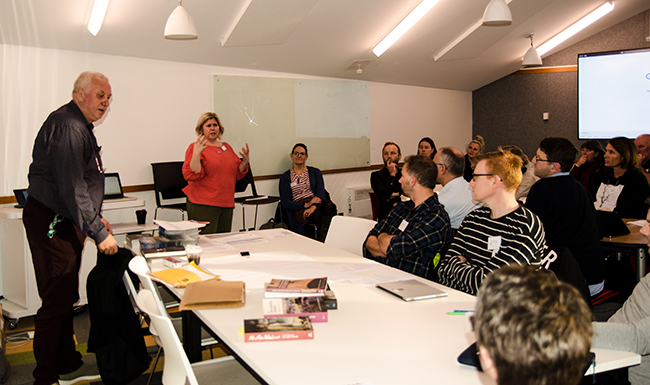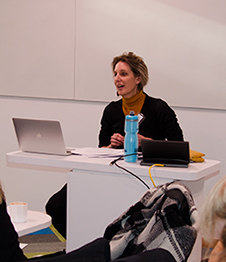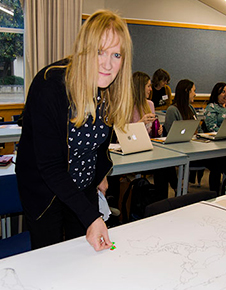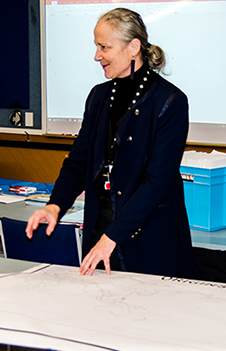Wednesday 9 June 2021 4:33pm

Professor Lachy Paterson and Associate Professor Angella Wanhalla present at the Teaching Aotearoa New Zealand Histories Professional Development Hui on 4 June.
During the Teaching Aotearoa New Zealand Histories Professional Development Hui, held at the Dunedin campus on 4 June, Otago academics joined history professionals to help teachers get to grips with key ideas in the proposed new history curriculum.
About 100 teachers from Otago attended the hui, which was supported by Otago’s History Programme and the Centre for Research on Colonial Cultures.
Hui organiser and History programme academic Dr Miranda Johnson said the event stemmed from concerns researchers of New Zealand, Māori and Pacific history raised after the Ministry of Education released the draft year 1 to 10 curriculum in February.

Dr Miranda Johnson
“At initial meetings with local primary and secondary school principals teachers expressed a widely-shared need to get to grips with how to teach Aotearoa New Zealand’s histories, particularly in relation to Māori, Pacific and local histories, which the curriculum highlights as an approach but does not offer substantive comment on.”
The day-long hui included general discussions on the curriculum and addressed how to teach “difficult histories”. During break-out sessions teachers discussed various with frameworks with Otago History and Te Tumu staff Professor Angela McCarthy, Professor Lachy Paterson, Associate Professor Angela Wanhalla and Dr Frances Steel, who were joined by experts from several institutions including a team from the Hocken Collections, led by Lynn Benson, and from Toitū, led by Seán Brosnahan.
“We wanted to add to their resources for sources and stories they can bring into the classroom to increase students’ understandings of local histories. Also, we believe students need to learn basic skills of historical inquiry, including learning how to differentiate between reliable and less or unreliable historical sources – this is obviously a key skill for democratic citizenship too,” Johnson says.
Johnson says the value of teaching history through local stories and community experiences is that it helps students to place their own family histories in context to “learn more about the place they call home.”

Professor Angela McCarthy
“We are concerned about how this can be done fairly and inclusively given the real unevenness in local history resources. The curriculum centres Māori history and local iwi and hapū histories of particular places which is critically important. However, doing so can unnecessarily burden mana whenua with requests for help – we are trying to get ahead of that by directing teachers to useful resources and providing tips for teaching.”
“It’s important too that the stories of and sources relating to the diverse communities that have made up Dunedin’s past and present are well and accurately represented – for instance the Chinese, Lebanese and diverse Pasifika histories of Dunedin as well as more recent migrant histories. We’ll be talking with teachers about religious identities too – including Christian inter-denominational ones but also other religious identities and practices too.”
Johnson hopes that after the hui academics and teachers have a better appreciation of how “vital, interesting and important” history is, and that they have some ideas and resources to work with in classrooms.

Lynn Benson, Toitū
“I hope they also come away knowing they know that they can find further support and guidance from history staff and others at the University for developing further resources. We hope this is the beginning of a longer-term relationship.
About the curriculum changes
At the hui teachers were directed to the Royal Society Te Apārangi’s Expert Advisory Panel report.
Johnson says the panel has done a brilliant job in explaining “what is important about this curriculum and showing how it might be further enhanced by specific references to neglected aspects of Aotearoa New Zealand’s histories as well as more general and thematic framings.”
